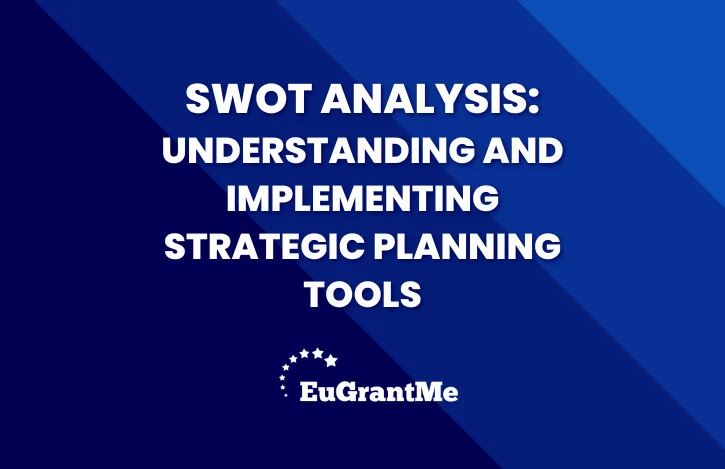Strategic planning is essential for any business seeking long-term success and sustainability. One of the most effective methods for strategic planning is using SWOT analysis tools. SWOT analysis helps organisations understand their internal strengths and weaknesses, as well as external opportunities and threats. This comprehensive approach allows businesses to make informed decisions and develop strategies that leverage their strengths, mitigate their weaknesses, exploit opportunities, and guard against threats.
What is SWOT Analysis?
SWOT stands for Strengths, Weaknesses, Opportunities, and Threats. It is a strategic planning tool used to evaluate these four aspects of a business or project. The primary purpose of a SWOT analysis is to provide a clear, structured framework for assessing an organisation’s internal and external environments. By identifying strengths and weaknesses within the company, and opportunities and threats in the external market, businesses can create strategies that align with their capabilities and market conditions.
Understanding the Components of SWOT Analysis
Strengths are the internal attributes and resources that support a successful outcome. These could include a strong brand reputation, a loyal customer base, unique technology, or exceptional human resources. Recognising and leveraging these strengths can give a business a competitive edge.
Weaknesses are internal factors that might hinder success. These could include limited resources, lack of expertise, poor location, or outdated technology. Identifying weaknesses is crucial for businesses to address and improve upon them.
Opportunities are external factors that the business could exploit to its advantage. These might include market growth, technological advancements, regulatory changes, or emerging customer needs. By identifying opportunities, businesses can strategically position themselves to take advantage of favourable conditions.
Threats are external factors that could cause trouble for the business. These might include economic downturns, increased competition, changes in consumer behaviour, or regulatory challenges. Recognising threats allows businesses to develop contingency plans and defensive strategies.
Implementing SWOT Analysis in Strategic Planning
Implementing SWOT analysis tools in strategic planning involves a systematic process. Begin by gathering a diverse team of stakeholders who can provide varied perspectives. This team might include managers, employees, and external consultants. The next step is to conduct a thorough analysis of the business environment, both internal and external.
Conducting Internal Analysis
Start by examining your organisation’s internal environment to identify strengths and weaknesses. This can be done through brainstorming sessions, surveys, and data analysis. Encourage team members to be honest and objective. The goal is to create a realistic picture of the company’s current state. Consider factors such as financial performance, operational efficiency, human resources, and technological capabilities.
Conducting External Analysis
Next, analyse the external environment to identify opportunities and threats. This involves researching market trends, competitor behaviour, technological developments, and regulatory changes. Use tools like PEST analysis (Political, Economic, Social, and Technological) to gain a comprehensive understanding of the external factors that could impact your business. Engage with industry experts, customers, and suppliers to gather insights.
Creating the SWOT Matrix
Once the internal and external analyses are complete, compile the findings into a SWOT matrix. The matrix is typically a four-quadrant chart, with each quadrant representing one of the SWOT components. This visual representation makes it easier to understand the relationships between strengths, weaknesses, opportunities, and threats. It also helps in identifying strategic priorities.
Developing Strategies from SWOT Analysis
The next step is to develop strategies based on the SWOT analysis. This involves leveraging strengths to take advantage of opportunities, addressing weaknesses to avoid threats, and considering how strengths can mitigate weaknesses and how opportunities can offset threats. Strategies should be specific, actionable, and aligned with the organisation’s overall goals.
Leveraging Strengths and Opportunities
Identify ways to capitalise on your strengths to seize opportunities. For example, if your company has strong research and development capabilities, you might focus on innovative product development to meet emerging market needs. Strengths can also be used to enhance marketing efforts, improve customer service, and expand into new markets.
Addressing Weaknesses and Threats
Develop plans to address weaknesses and protect against threats. This might involve investing in employee training, upgrading technology, improving operational processes, or seeking strategic partnerships. It’s important to prioritise the most critical weaknesses and threats and develop realistic, achievable plans to address them.
Monitoring and Reviewing
SWOT analysis is not a one-time activity. It’s a dynamic process that should be revisited regularly. As the business environment changes, new strengths, weaknesses, opportunities, and threats will emerge. Regularly reviewing and updating your SWOT analysis ensures that your strategic plans remain relevant and effective.
Benefits of SWOT Analysis
SWOT analysis tools offer several benefits for strategic planning. They provide a clear and structured framework for evaluating a business’s current position and future potential. This holistic approach encourages strategic thinking and facilitates better decision-making. It also fosters collaboration and engagement among team members, as it involves input from various stakeholders.
Understanding and implementing SWOT analysis tools is crucial for effective strategic planning. By identifying and leveraging strengths, addressing weaknesses, exploiting opportunities, and mitigating threats, businesses can develop robust strategies that drive success. Regularly revisiting and updating the SWOT analysis ensures that strategies remain aligned with changing market conditions. By using SWOT analysis tools, organisations can navigate the complexities of the business environment and achieve their long-term objectives.
In conclusion, SWOT analysis tools are indispensable for strategic planning. They help businesses understand their internal and external environments, enabling them to make informed decisions and develop effective strategies. Implementing SWOT analysis in your strategic planning process can significantly enhance your business’s ability to achieve its goals and thrive in a competitive landscape.
At EuGrantMe, we are passionate about fostering innovation and empowering ambitious minds to flourish. Our mission revolves around providing top-notch grant writing services for the EIC Accelerator and Horizon grants in Europe, enabling our customers to unlock the full potential of their ground-breaking ideas.
Do you have a project to turn into reality?
Contact us!


